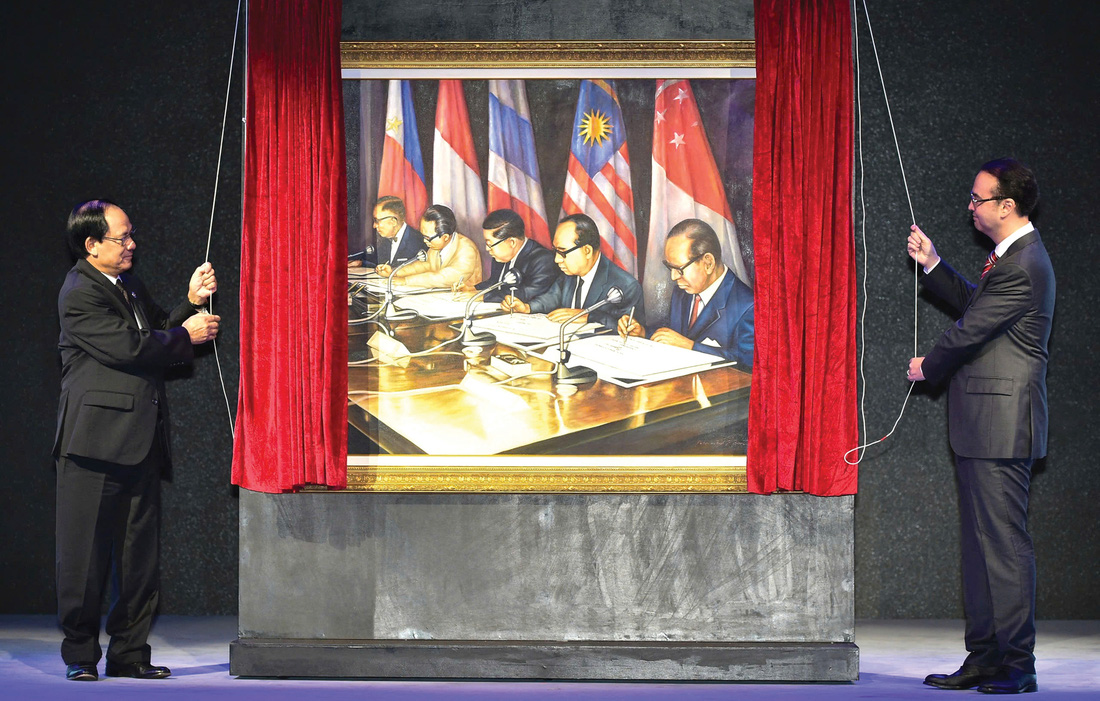
ASEAN Secretary General Le Luong Minh (left) and Philippine Foreign Minister Alan Peter Cayetano unveil a painting of ASEAN founders at a conference in Manila in August 2017 – Photo: AFP
On the occasion of National Day September 2, Mr. Le Luong Minh, the first Vietnamese diplomat to assume the role of ASEAN Secretary General and twice the executive chairman of the United Nations Security Council, shared with Tuoi Tre interesting stories about the diplomatic profession as well as the country's integration milestones.
Right, for ASEAN, must always be in the interests of peace , stability and development of the region as well as each member country.
Former ASEAN Secretary General LE LUONG MINH
Balancing private and public interests
* How is ASEAN different when you were Secretary General and ASEAN today, sir?
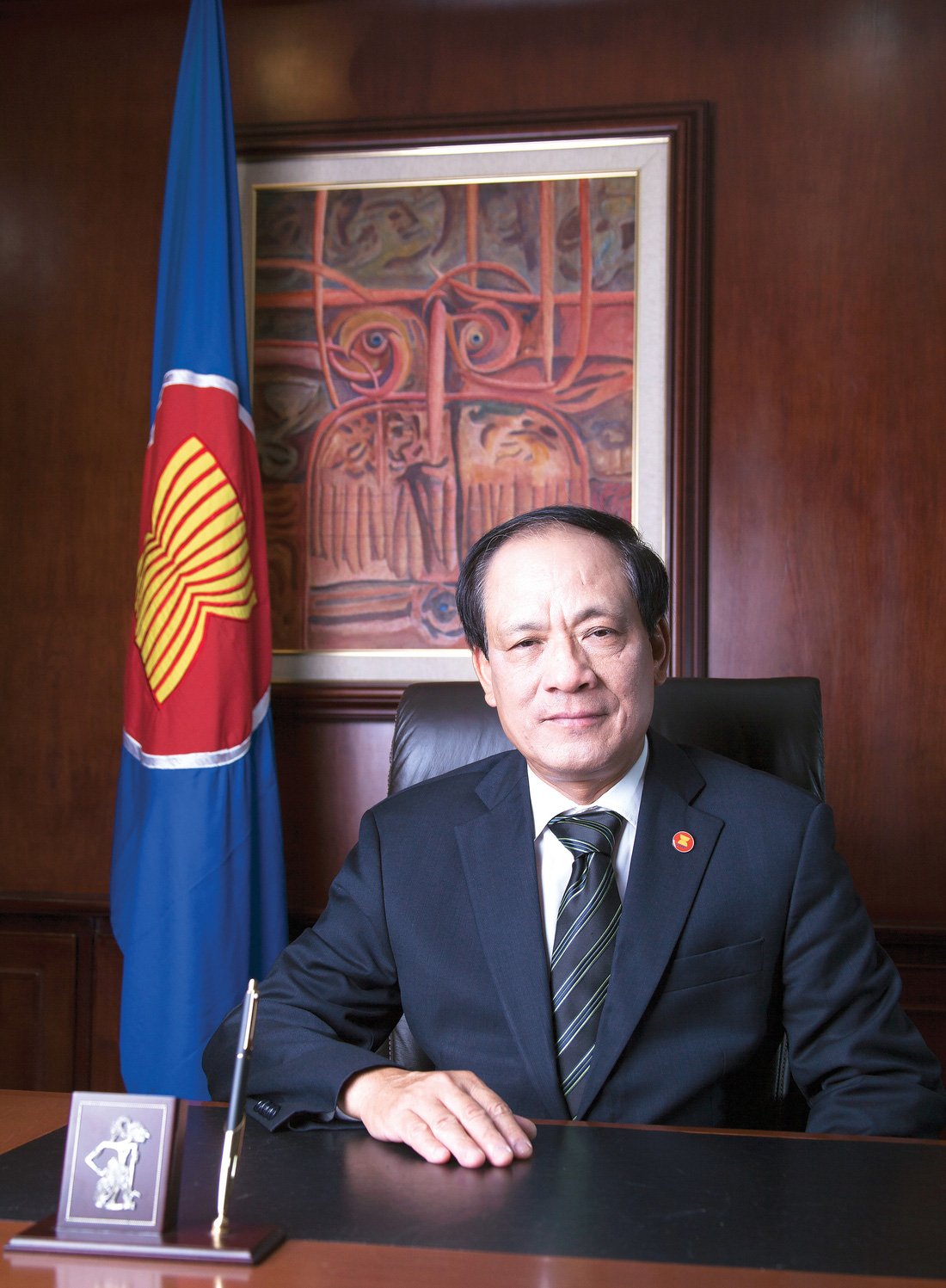
Former ASEAN Secretary General Le Luong Minh
– When I began my term as ASEAN Secretary General in January 2013, ASEAN was just halfway towards the establishment of the ASEAN Community in 2015, with the bloc's total GDP only around 2,300 billion USD, making it the seventh largest economy in the world.
Currently, ASEAN's total GDP has reached about 3,800 billion USD, making it the fifth largest economy in the world.
ASEAN is also in the final stages of realizing the ASEAN Vision 2025, and has completed the content of the ASEAN Vision beyond 2025 to 2045. Overall, in the economic field, ASEAN has made remarkable progress despite having to suffer the severe consequences of the COVID-19 pandemic.
However, in the security-political sphere, the situation has become much more complicated due to the conflict in Myanmar, with many dangerous consequences such as the emergence of sensitive ideas and proposals that threaten the integrity of the ASEAN Way.
During my tenure as Secretary-General, ASEAN, through its mediation and reconciliation efforts, successfully resolved the consequences of the border dispute between two member countries, helped Myanmar gradually stabilize the situation under the leadership of the Reconciliation Government and become a major attraction for foreign investment, and helped Thailand quickly restore democratic mechanisms after the 2014 coup.
Currently, ASEAN is trying to implement the 5-point Consensus on Myanmar, but it is very difficult as the conflict in Myanmar is increasingly fierce.
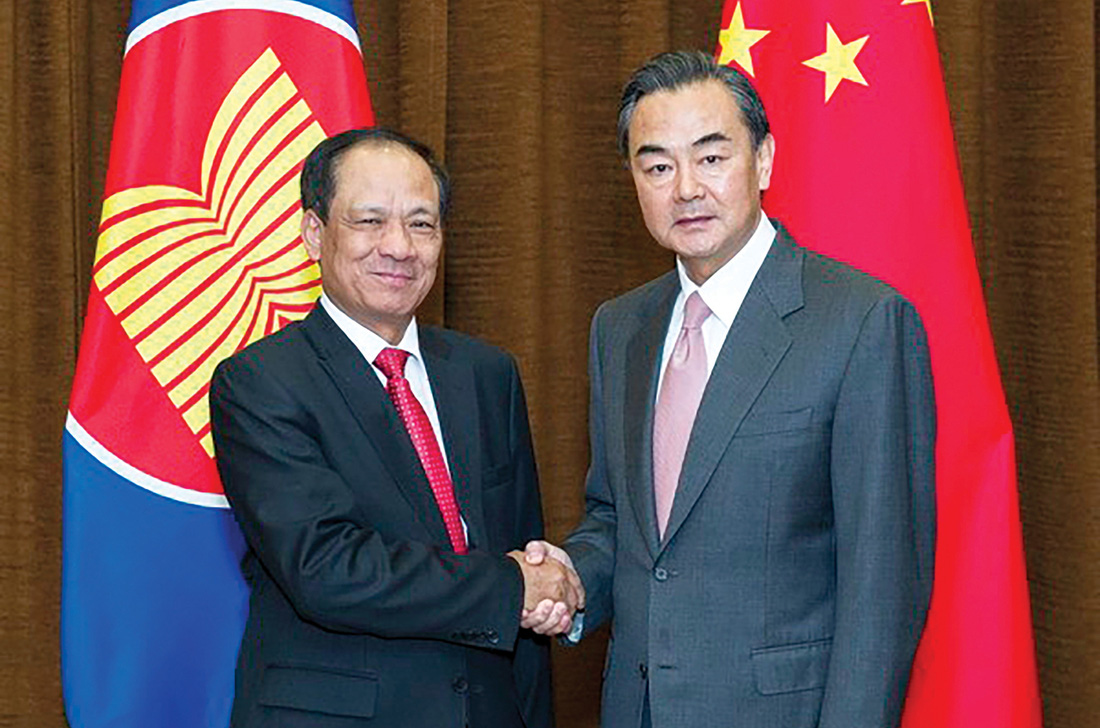
ASEAN Secretary General Le Luong Minh met Chinese Foreign Minister Wang Yi during his visit to China in 2013 – Photo: VNA
* What is the biggest difference between your work at the United Nations and ASEAN?
– The United Nations and ASEAN have in common that they are multilateral organizations but differ in scale: global and regional.
In terms of scale, ASEAN is like a miniature United Nations: 10 compared to nearly 200 members. In terms of scope of work, there is not much difference because almost all issues discussed at the United Nations are on the ASEAN agenda in different mechanisms, under three pillars: security-politics, economy and culture-society.
The biggest difference between ASEAN and the United Nations is the mechanism for passing and the meaning of resolutions or decisions. The United Nations makes decisions mainly through voting, except in cases where consensus is reached during consultations.
ASEAN has no voting mechanism, except for the secret ballot to elect two of the four deputy secretaries-general. ASEAN decisions are mainly made on the basis of consensus, which is one of the basic principles of the ASEAN Way, with the aim of ensuring voluntariness, leaving no one behind and the feasibility of agreements, thereby maintaining unity and solidarity within the bloc.
The relationships, contacts and interactions between colleagues at the United Nations and ASEAN are also different. While at the United Nations, colleagues can be representatives of allied countries, neutral countries or opposing countries, at ASEAN, colleagues are relationships between representatives of member countries sharing common interests within the framework of the “ASEAN Family”.
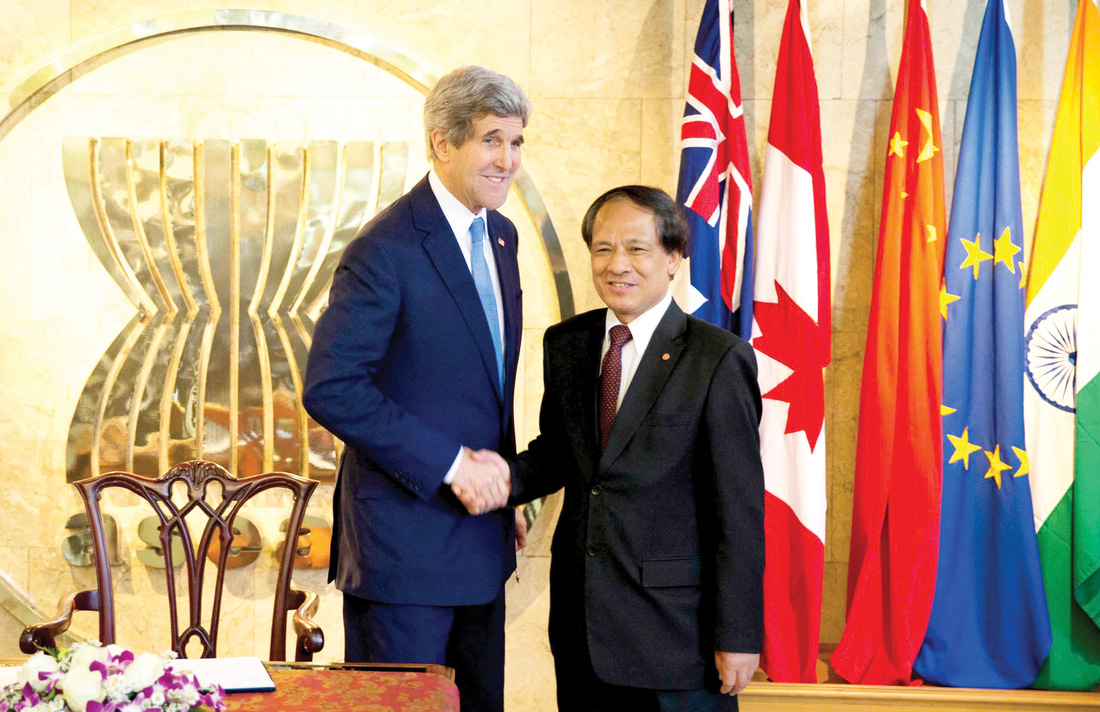
ASEAN Secretary General Le Luong Minh met with US Secretary of State John Kerry in February 2014 in Jakarta, Indonesia – Photo: MOFA.GOV.VN
* What experience at the United Nations has helped you fulfill your responsibilities in ASEAN?
– My working experience and relationships at the United Nations have helped me a lot in fulfilling my responsibilities at ASEAN. That is the nearly eight-year term as Ambassador, Head of the Permanent Mission to the United Nations (in which Vietnam was elected for the first time as a non-permanent member of the Security Council) and twice as Executive President of the United Nations Security Council, my experience working at multilateral forums as well as my motto throughout my career in relations with colleagues is to be sincere according to the principle "it is not always possible to tell the truth, but never lie".
* When you assumed the position of ASEAN Secretary-General, what were the difficult, even intractable, problems that the ASEAN Secretariat had to face, solve and overcome?
– During my time as Secretary-General and up to now, the East Sea remains one of the most difficult and intractable issues that ASEAN and the ASEAN Secretariat have had to face. Many times when I spoke out about ASEAN’s common stance, I was criticized by name by a representative of a non-ASEAN country that is a party to the dispute.
Maintaining the central role requires ASEAN, the ASEAN Secretariat and the ASEAN Secretary-General himself to be courageous and know how to harmonize and balance between national interests and the common interests of the bloc.
* What do you think about the statement that in any context, ASEAN will always have to stand between the US and China?
– As has been observed, for many years now ASEAN has been stuck in the Sino-US competition, competition between major countries, not only in Southeast Asia but also in the vast Asia-Pacific and Indo-Pacific regions.
ASEAN's policy of not choosing sides in disputes between major countries must be understood as not choosing to ally with one country against another, not that ASEAN must isolate itself from the truth, even though that truth often does not lie between the two sides. And the truth, for ASEAN, must always be in the interests of peace, stability and development of the region as well as each member country.
Above many other and often contradictory interpretations, in my opinion, that is the basic content of ASEAN's centrality policy.
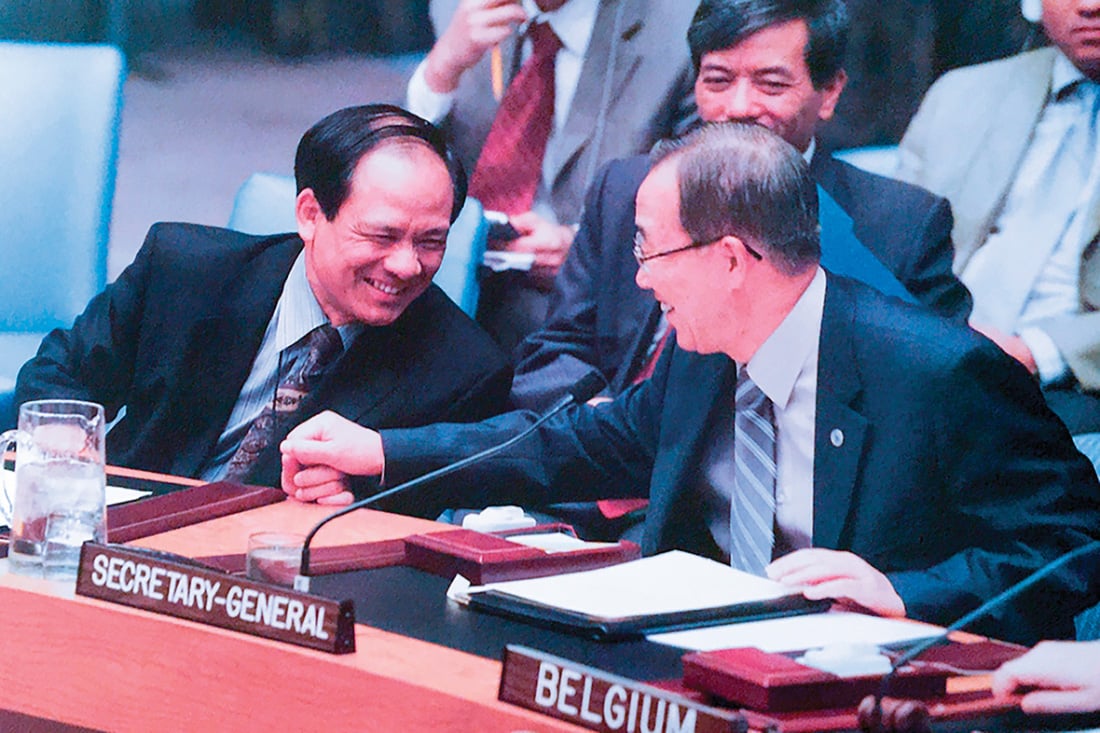
Ambassador, Head of the Permanent Mission of Vietnam to the United Nations Le Luong Minh and UN Secretary General Ban Ki Moon in a meeting Mr. Minh chaired a meeting of the Security Council - Photo: MINISTRY OF FOREIGN AFFAIRS
Open up a new situation
* As someone whose entire career is associated with multilateral diplomacy, how do you evaluate the milestone of Vietnam joining ASEAN?
– In my opinion, normalizing relations with the US and joining ASEAN at almost the same time has opened up a situation where Vietnam has escaped the siege and embargo and become a member of one of the two regional organizations that are considered the most successful and have the most development prospects in the world.
* There is an opinion that when Vietnam joins ASEAN, we are in a passive position in participating in free trade agreements (FTAs) because we only participate as an ASEAN member in FTAs with other partners. What is your opinion?
– That assessment is correct but not enough. We integrated and opened our economy later than the countries that joined ASEAN before, the size of our economy is still small, and our negotiation experience is limited, so it is natural to be cautious in participating in bilateral FTAs.
This assessment would be more complete if it were pointed out that bilateral FTAs that Vietnam signed with partners often have higher commitments and standards than those signed by ASEAN or ASEAN member countries, due to our policy of deeper integration and developing an export-priority economy, and partners not accepting lower levels of commitment and standards than those they had previously agreed with partners. The FTA that Vietnam signed with the European Union (EVFTA) can be taken as a typical example.
* As an increasingly important voice in ASEAN, what should Vietnam do to continue to be a leading voice in the bloc's issues, sir?
– In addition to the United Nations and ASEAN, Vietnam is also a member of many other important international organizations such as the Francophonie, the Non-Aligned Movement, the Asia-Pacific Economic Cooperation Forum, the Asia-Europe Cooperation Forum, the World Trade Organization and has signed 16 free trade agreements with important partners.
Vietnam has also established diplomatic relations with most members of the United Nations, including Comprehensive Partnership, Strategic Partnership or Comprehensive Strategic Partnership with 30 countries, including all five permanent members of the United Nations Security Council.
That, together with political stability and outstanding economic growth, gives Vietnam a great advantage and a weighty voice in resolving ASEAN issues, especially those that affect our practical interests such as the East Sea, climate change, management and use of Mekong River water, anti-terrorism, and drug trafficking prevention.
To continue to promote its leading role in these important and practical issues, Vietnam needs to strengthen cooperation and coordination with other member countries to maintain ASEAN's central role in the Asia-Pacific regional structure.
This is not always easy due to differences in interests among member states, especially on the East Sea issue.
ASEAN prioritizes cooperation on youth
* Looking to the future, how do you expect the youth of Vietnam and member countries to contribute to the future ASEAN community?
– Nearly 40% of the current ASEAN population is between the ages of 15-35, which is defined as youth. With the aging population trend taking place in many ASEAN countries, in the coming decades, today’s youth will play an important role in the multifaceted social life of the ASEAN Community.
Youth cooperation has been a priority area for ASEAN for many years. Since 2017, ASEAN has developed an index on youth development in member countries. In the leadership of some member countries, there have appeared young faces, even very young faces that we could only see in developed countries before.
With the priority policies and correct orientation of ASEAN in general and each member country, combined with the inherent dynamic nature of youth in East Asia and Southeast Asia, I have full confidence in the bright future of ASEAN youth in general and Vietnamese youth in particular, as well as the contributions of youth to realizing the goals set out in the ASEAN Community Vision after 2025 to 2045 to build a self-reliant, dynamic, inclusive, people-centered and youth-friendly ASEAN.
Career closely linked to multilateral diplomacy
Mr. Le Luong Minh (born in 1952) began his diplomatic career in the early days of Vietnam's reunification in 1975, when he was appointed as an officer at the Vietnamese Embassy in Canada after graduating from the University of Diplomacy and attending an intensive training course in English and linguistics at Jawaharlal Nehru University in India.
He served as Deputy Minister of Foreign Affairs for 10 years until his retirement in 2018, with a career closely linked to multilateral diplomacy. He spent many years working at the United Nations headquarters in New York (USA) and Geneva (Switzerland).
As head of the Vietnamese Delegation to the United Nations, he twice sat in the chair of the Security Council when Vietnam was first elected as a non-permanent member for the 2008-2009 term.
He is also the first Vietnamese to hold the position of ASEAN Secretary General from January 1, 2013 to December 31, 2017. This is a position that, according to the rotation principle, will have to be held by another Vietnamese person every 50 years since 2013.
Tuoitre.vn
Source: https://tuoitre.vn/nha-ngoai-giao-le-luong-minh-asean-nhu-lien-hiep-quoc-thu-nho-20240829132554766.htm#content-1



![[Photo] Prime Minister Pham Minh Chinh and Prime Minister of the Kingdom of Thailand Paetongtarn Shinawatra attend the Vietnam-Thailand Business Forum 2025](https://vphoto.vietnam.vn/thumb/1200x675/vietnam/resource/IMAGE/2025/5/16/1cdfce54d25c48a68ae6fb9204f2171a)





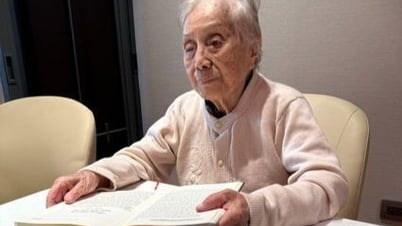

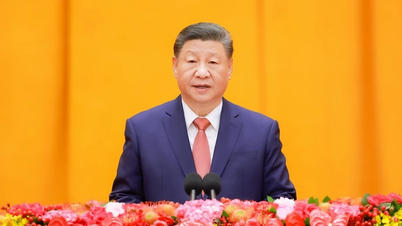


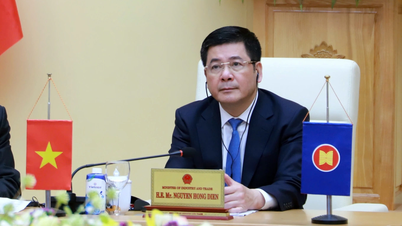

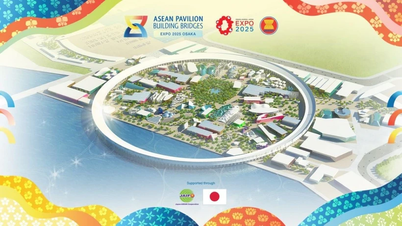


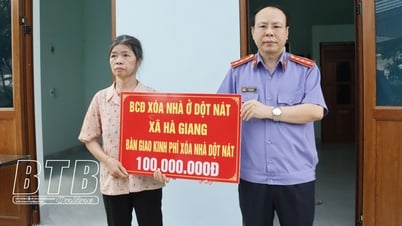
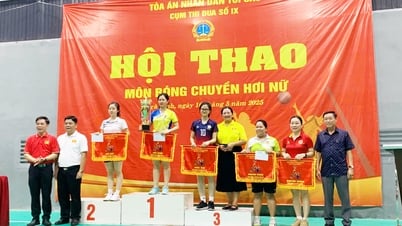







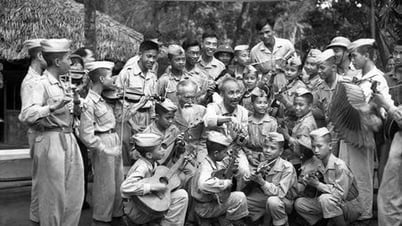

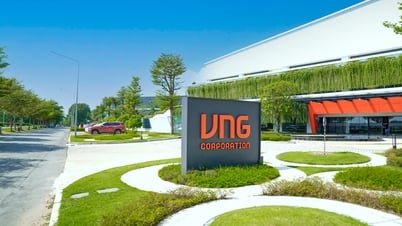
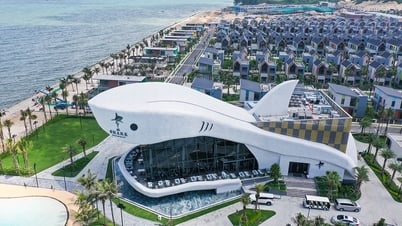

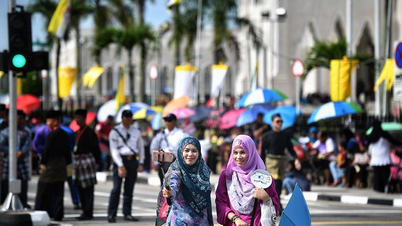
![[Photo] President Luong Cuong receives Prime Minister of the Kingdom of Thailand Paetongtarn Shinawatra](https://vphoto.vietnam.vn/thumb/1200x675/vietnam/resource/IMAGE/2025/5/16/52c73b27198a4e12bd6a903d1c218846)









































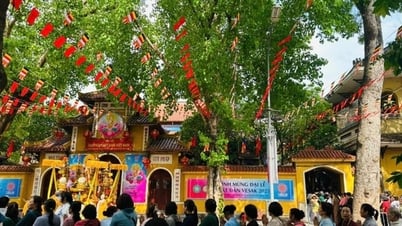

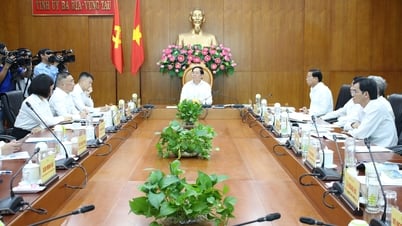

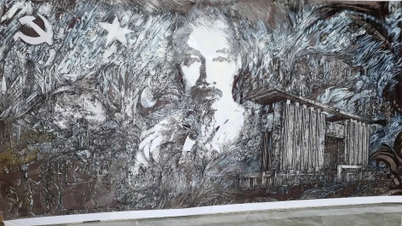

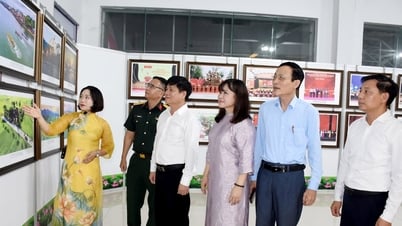

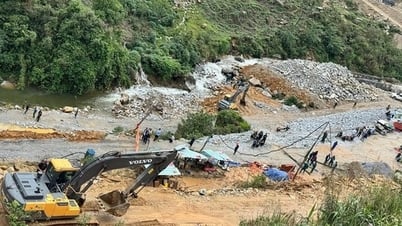
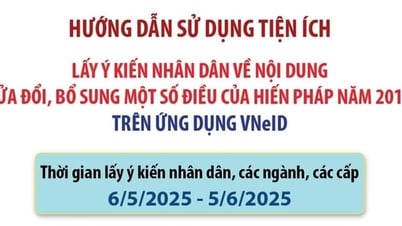










Comment (0)